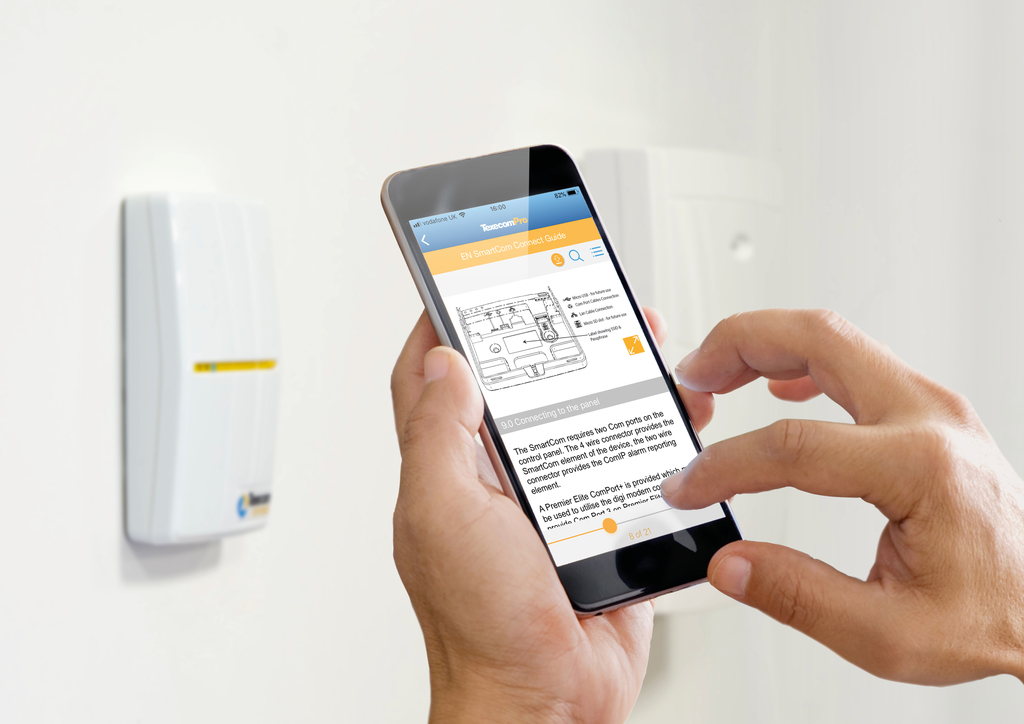
Brian Sims
Editor

Brian Sims
Editor
Building automation and smart home technology have long been in demand, and intruder alarm systems are being increasingly used to meet this market need. Clym Brown looks at how new intruder alarm digital services are transforming the way intruder alarm installation companies can add more value to their customers.
SECURITY ALARMS are increasingly adding value to end users every day by offering building automation and smart home technology. And no wonder - security installers are the best-placed people to offer these services, due to five principle reasons:
1. They are trusted advisors. Installers are already regarded as trusted advisors by end users, who see installers as having credibility as the experts in protecting people. End users put their lives, properties and livelihoods in installers’ hands.
2. They are security experts. They understand the technology and are experienced at delivering bespoke solutions based on users’ individual needs.
3. They have local knowledge. Installers usually have an intimate knowledge of their local area and are aware of any local requirements and regulations, as well as any prevailing security and safety risks in the area.
4. They are on call. A security installer is a support agent, on call 24 hours a day, seven days a week, 365 days a year. With an installer, the end-user is never alone.
5. They are a long-term partner
Security installers are there for the long haul. They can help with upgrades, ensure what they offer is future-proof – and they also have their finger on the pulse of industry trends.
As a result, intruder alarm systems are increasingly connected to the internet, via ethernet, WiFi or GPRS, opening up a host of other value-added digital services.
Remote system maintenance
Security installers are further cementing their trusted-advisor status with customers by using digital services to offer always-there ‘round-the-clock’ support.
Cloud-based remote maintenance services are allowing security installers to manage multiple alarm systems from one simple interface, simultaneously. This in turn helps them save money and increase revenues by being more efficient and adding value to their customers.
One of the most important features of Cloud-based intruder alarm panel management – and one that could arguably provide the biggest time saving for end users – is remote maintenance and health checks. This allows a security system to be interrogated remotely, with accurate and comprehensive reports produced in just a few minutes. This is useful not only for fault-finding, but also for identifying potential issues before they become a problem for the customer.
Cloud packages also gives engineers complete control over their alarm system portfolio – this includes safeguards to ensure only the right people have access to the right data. Engineers should be restricted to only view and access security systems that are specific to them.
System programming can be made simple, quick and easily, with some systems containing options to create custom programming templates from previous installations or imported programming profiles. This reduces the number of programming steps required, guaranteeing consistency from site-to-site and eliminating programming errors.
Unlike traditional software-based diagnostic packages, many Cloud-based systems feature interfaces that are clean, modern and intuitive, with navigation aided by a logical layout similar to many modern technology-based interfaces. Simple menus, clear icons and the use of breadcrumbs makes management a simple task. Security installers should be able to view all of their connections via an at-a-glance overview; indicating in real-time if they have any systems which might require maintenance or remedial work, helping them to maintain the highest levels of customer service.
Tools improve knowledge
More progressive product manufacturers are now providing installer-specific digital resources, providing installers with access to the very latest product information, manuals, guides, technical bulletins and other useful material at the touch of a button.
With intuitive and fast navigation, installer apps are really simplifying the process of gaining access to the information installers need quickly and easily. No more hunting manufacturers websites for product manuals or specification sheets, everything is made available in the field.
Key benefits to installers include:
Installer apps makes finding information a simple process in the field. Whether it’s accessing a full range of documentation for new and legacy products or asking questions on the installer-only forums, it’s all possible.
Installers apps allow manufacturers to offer enhanced the levels of customer help and support for installers. This is in addition to, and compliments, other existing customer support processes – manufacturers are just adding more ways for installers to get the help and information they need.
Added value
The latest end user mobile apps, particularly those that have really focussed on used-centric design, completely transform the end user experience. These next generation end user mobile apps provide environments where end users actively want to interact with their smart building, enjoy the new possibilities that are open to them, and delivers the peace of mind that comes with knowledge and control.
Technology should make people’s lives easier, not more complex. The most successful mobile apps have been carefully designed to allow end users access to an array of custom features, to tailor their app experience for their own personal and particular needs, without resorting to complicated programming.
Today’s intruder alarm systems include advanced technologies, which deliver a world of possibilities. These are being used to add value, while the core graded element of the system can continue to offer police first response or a credible bells-only solution to a professional standard. Where risks are high and insurance is essential, the end user can still do whatever the insurer demands. However, its inherent capabilities can also be used to deliver other ‘value added’ services without compromising the alarm grading.
In many mainstream applications, the value proposition for an intruder alarm system no longer stops at security. While it is a challenge to sell a monitored security system to a domestic user who is sceptical about police response, the task has been made easier by other benefits – which can be used on a day-to-day basis – being included. These include – but are not limited to – push notifications of site status changes, messages relating to household activity, visual verification of events, communication with other users, fire protection, home automation, remote control of peripheral devices, and so on.
Today’s security technology allows end users to make their own decisions with regard to how alarm and smart home events are handled. Not only is technology well established in this regard, but it is already used in many other security applications which do offer added value. If a user wants to be alerted to an intrusion before a criminal has forced an entry into a building, that’s simple to implement. If they want to verify external detections to filter out nuisance activations, that can also be done. If they want to share data from the system or use it to issue notifications of information including security, site status, personnel status (including monitoring family members, children, vulnerable and elderly relatives, etc.) it is achieved without any complex additions to the system.
Additional services can be offered to fully exploit the potential of the control panel whilst also preserving compliance with standards. This allows end users to benefit from credible security protection that also meets their demands for more smart building features.
New digital services are transforming the way intruder alarm installation companies can add more value to their customers. Digital services are beginning to revolutionise using, designing, installing and maintaining intruder alarm systems, and this trend is only just beginning.
Clym Brown is marketing director at Texecom Ltd. For more information, visit www.texe.com


